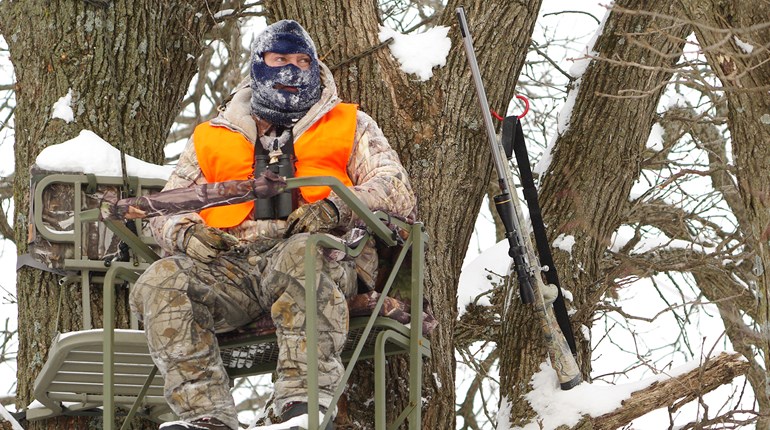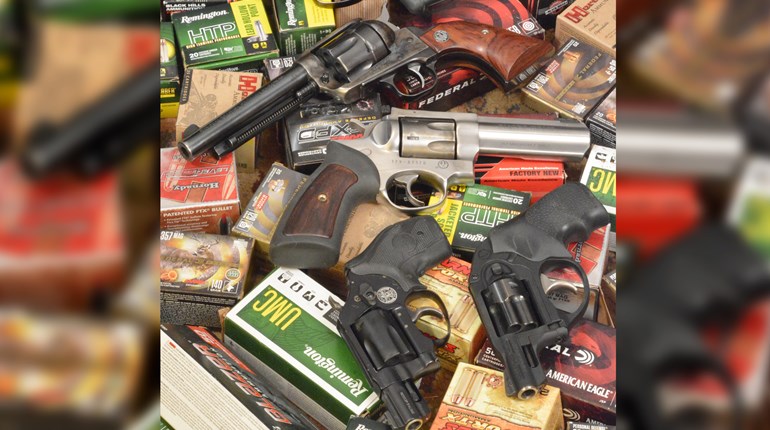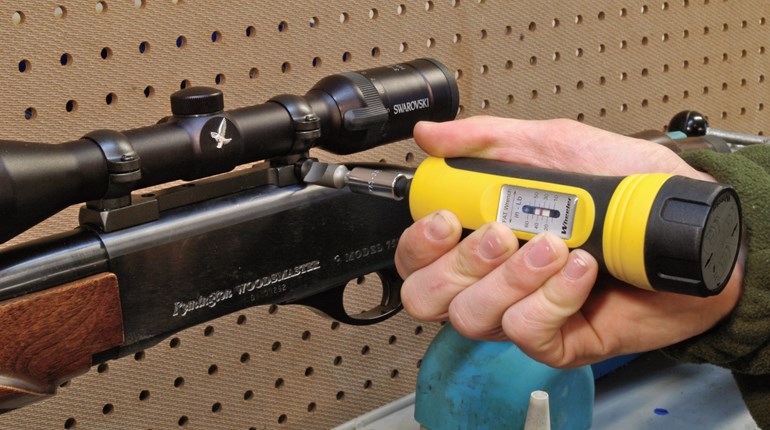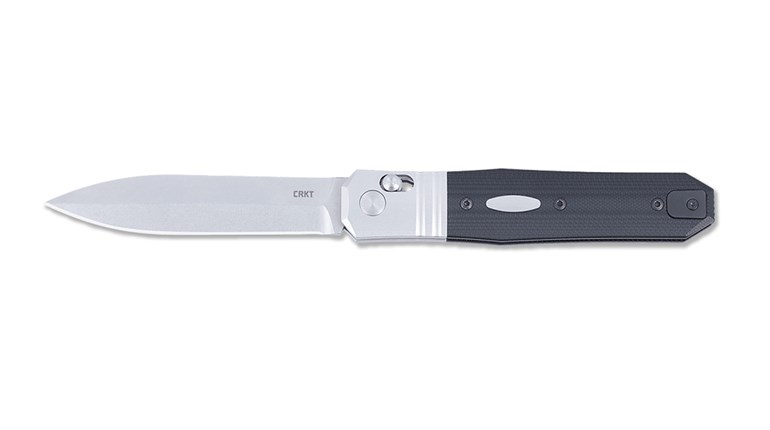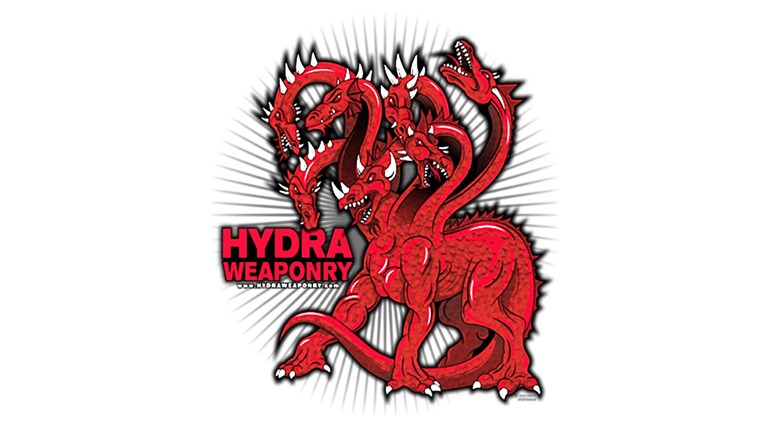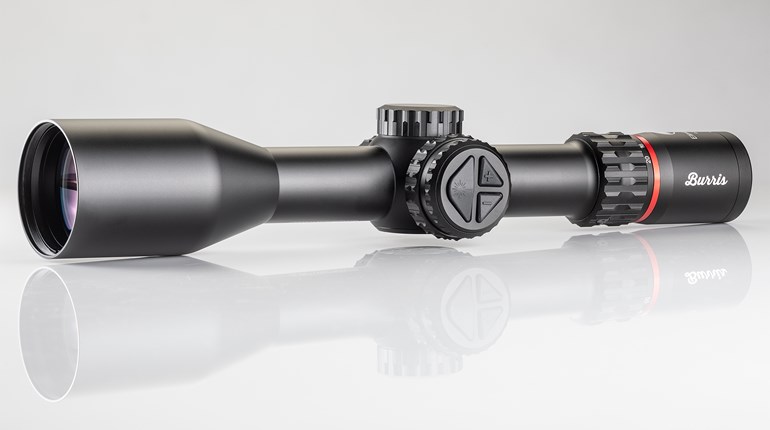
The world has always been a dangerous place and that has escalated during the COVID pandemic. Fewer people are working and more people are venturing into the great outdoors.
I define the outdoors as different from the wilderness. The wilderness is a wild place where few humans venture and the threat is almost exclusively from animal predators. The outdoors is more dangerous, as it’s often populated by both human and animal predators.
That means humans are the greatest threat, but, by venturing into the woods, you have also introduced the possibility of four-legged attackers, so your carry gun and ammo should be adjusted to address that potential. The odds of a bear, mountain lion or other beast attacking you are pretty low, but never zero.
Bears are far from the only dangerous critters that require a bit more horsepower from a defensive handgun. One example I like to use happened years ago in Florida. We were handgun hunting for hogs, and one in our group showed up with a standard-capacity 9 mm pistol. Against my advice, he used it anyway. “I have 17 rounds in this gun, nothing can survive that,” he said. I just shook my head. I still do every time I hear that argument. It’s probably why I have arthritis in my neck these days.
A big hog showed up and he shot it with his wonder nine. He then followed the blood trail until the “dead” hog decided it was rather angry with him. A running battle ensued, during which he emptied two more magazines. When I got there, my friend was out of ammo and “treed” on a large brush pile with a very pissed-off boar hog trying to get him. The hog charged me on sight and I killed it with a .44 Mag.
He had hit the hog many times; we dug out at least eight bullets and didn’t get them all. But, most of them were not doing anything more than making the feral pig mad. It just was not enough gun. The bullets could not get through the tough gristle shield, muscles and bones of a boar hog. One had hit too far back, missed the cartilage shield and was lodged in his guts. That’s what was probably making him so ornery.
The lesson from all this is simple: carry guns for urban problems are often not powerful enough to be outdoor solutions.

Of course, there are a lot of variables, and I suggest adjusting your carry gun’s power level to deal with the worst-case scenario. For example, where I live the black bear is our biggest predator (although methamphetamine dealers are the most prevalent.) Black bears are shy and scared of humans, yet still kill more people than all the other bears combined. So, I plan for the worst.
There are plenty of lesser threats most every place. Mountain lions, wolves, even coyotes. Yes, coyotes; reports of attacks by them are climbing, some fatal. A threat people don’t think about much is rabies. I once had a skunk that I assumed to be rabid try to attack me while I was hunting in Texas. I can outrun a skunk, but he was persistent. After a mile I decided enough was enough. The .480 Ruger is sufficient against skunks.
Another time, I fell to the misguided concept of carrying a lightweight handgun when hiking, because “I won’t need it anyway.” Turns out I did.
A rabid coyote focused his bad intentions on me. I tried to shoot him with a Kel-Tec .32 ACP, but those little guns were not made for precision at distance and I missed him several times. Rather than run out of ammo, I waited until he was powder-burn close and ended the problem. Now I carry a gun with good sights and a good trigger. While a head shot from the .32 ACP ended the threat, self-preservation dictated that I migrate to bigger, more powerful cartridges.
My minimum-power-level guideline for anybody who has heavyweight threats on the menu is 4-3-1. That is a minimum of .40 caliber with a bullet weight of at least 300 grains and a minimum muzzle velocity of 1,000 fps. That makes the .44 Mag. a good choice for most of the world’s wild places. In locations where the chances of a big bear encounter are extremely high, I like more power and usually carry a .454 Casull, .500 Wyoming Express or .500 S&W Mag.
Rimfires are pretty light for solving serious problems and the .380 ACP is underpowered for any outdoors use. Just recently, a woman musher and her dogs were attacked by a moose in Alaska. She emptied her .380 into the bull with no visible result. Her advice now is to carry a bigger gun.
Moose can be very dangerous at certain times of the year. They easily weigh half a ton and there is a lot of moose between the entry hole and anything important enough to stop the threat. So, you need a cartridge with a little whack behind the bullet.

In most non-bear- or moose-harboring places, a .357 Mag. is adequate. The 10 mm is in the same power range if you like a semi-auto. Although a bit light, these will work for most black bear encounters as well. Even small .357 Mag. revolvers like the J-frame I carry every day can be useful if you load the right ammo. They are easy to carry and are very powerful. The downside is they are tough to shoot accurately due to the short sight radius and heavy felt recoil. I have a Crimson Trace Lasergrip on mine, which solves some of the sight-radius problem.
On my fishing trips this summer, I have been carrying a custom .357 SIG-chambered Glock in a Kenai Chest holster. This holster keeps the gun quickly available, even when I am wearing a fishing vest or a pack. It also places the gun higher up on my body to help keep it dry, at least in theory. I would be lying to say it hasn’t been dunked in a creek or two. I know this violates my 4-3-1 rule, but where I have been fishing is all but bear free. When I hit the remote beaver ponds of the high country, I have a lightweight .44 Mag. with me.
I’ll admit, I live in a different world than most people. Guns are my business and my passion, so I have options. Although I have trouble grasping the concept, it’s been explained to me that some folks may not want to buy an expensive handgun just to take fishing. They tell me that a lot of people only have one or two handguns. I don’t dislike them for that; I just hope they get help.
The truth is any handgun is better than no handgun. Like my hog-hunting Florida friend, I strongly urge you not to use your everyday-carry gun for outdoor protection. However, if you must ignore my advice, at least load it with better ammo. Most self-defense ammo is designed to expand quickly and to not overpenetrate. The concept of limiting penetration for most defensive situations is grounded in good civics: A bullet that doesn’t over-penetrate is less likely to harm an innocent bystander.

Don’t kid yourself, though; a 9 mm is not a bear-stopper. “But, but, but—that guy in Alaska!” I know Phil Shoemaker, and he did stop a brown bear with a 9 mm. I can explain all the technical reasons why it worked that one time, but the single most important one is he had Buffalo Bore hard-cast ammo in the gun. He has more experience with brown bears than just about anybody alive, and he kept his cool and kept shooting. Also, although he will be annoyed at me for saying this, he got lucky.
Still, if you must use your carry gun outdoors, follow his lead; load your pistol with heavy-for-caliber, deep-penetrating, non-expanding bullets. Buffalo Bore and DoubleTap are two companies I know that make that type of ammo. Federal has just announced a new line of handgun ammo in carry-gun cartridges called Solid Core. I have not tried it, but I like the concept. Full metal jacket “hardball” ammo is a very poor choice: It’s designed to be inexpensive, not to penetrate deep and bust up bones.
Another very important thing to consider is how you carry the gun. In most outdoor-carry situations, open carry is fine. Other times, discretion is better exercised. You may be able to legally open carry, but is it worth the potential hassle? The world is infested with anti-gun types, and they all have cell phones. On the other hand, you must have the gun where you can get to it in an instant.
If you are outdoors, then odds are you will have a backpack, which doesn’t play well with most belt-carried handguns. Putting the gun in a pocket of your pack is a very bad idea. I was reminded of that recently. I was in shorts with an elastic waistband and no good way to carry a gun. So I stuck it in a pocket in my pack. It was a short, purpose-driven hike in an area I know very well. Then, we had an encounter with a suspected bad guy. I felt panic when I realized I could not reach my handgun. The encounter turned out to be nothing, but it taught me a lesson: You are not safe just because you have a gun; you must be able to get to it quickly.
Carrying a gun on your belt when you have a backpack not only blocks access to the gun, but is also uncomfortable as hell. If you are not carrying a pack, a belt holster is fine, just make sure it’s secure. You want a holster that will retain the handgun even when you are tumbling down a rocky hill. I often carry in a crossdraw holster that keeps the gun in reach when riding a horse, four-wheeler or motorcycle, or when I’m sitting in a truck.

For many years, I have carried a lightweight revolver in a holster that was attached to the hip belt of my pack. I can recommend this, except for one problem. When you take off the pack, you take off the gun. That can put the gun out of your reach and into the reach of other folks who you don’t want to have access to your firearm.
If you carry a pack, perhaps the best choice is a chest holster, as it keeps the gun accessible. I once hunted with a guide in Kotzebue, AK, who was alive only because his .44 Mag. was in a chest holster while he was packing out caribou quarters. A bear attacked and he killed it at extreme close range. One second more in accessing his handgun and they would have been flying in a new guide.
As I mentioned before, I have been using a Kenai chest holster from Gunfighters, Inc. This system uses a Kydex holster that is not bothered by rain or snow. The suspension system is comfortable, even with a bigger gun. The holster changes out in seconds, so I can easily switch from my .357 SIG to my Mag-na-Ported, custom Freedoms Arms .454 Casull.
I also have a Smith & Wesson Model 69 .44 Mag. that Ken Kelly at Mag-na-Port tricked out, which I like for outdoor carry. It wears a Trijicon SRP red-dot sight, so my old eyes can pick it up fast. Rob Leahy from Simply Rugged Holsters made a pancake-style leather holster that fits on a belt, but with his Chesty Puller suspension system, it doubles as a chest holster. I have worn it for hours when bird hunting in bear country, and it’s both comfortable and comforting. Galco also has several chest holsters. The two I have used a good amount are the Great Alaskan and the Kodiak, and I can recommend both without hesitation.
You might notice a theme in that most of my outdoor carry guns are in powerful cartridges. Read into that as you will. I have seen a lot of critters get shot in the past 60 years, and I have come to realize when it comes to defensive cartridges in the outdoors, bigger is never a mistake.












